Dunolly - Guide to Some of Dunolly's Historic Buildings

Dunolly is an attractive Central Victorian town with a vibrant past that stretches back centuries.
During the gold rush of the 1850s and 60s, more nuggets were discovered here and in the surrounding district than anywhere else in Australia. Gold was so plentiful that the area became known as the 'Golden Triangle', the most prolific, large gold nugget producing area in the world.
Today, Dunolly's main street, Broadway, is lined with kurrajong trees and grand heritage architecture. Here you can choose a great cafe to grab a bite or relax with a picnic in one of our reserves before exploring Dunolly's Goldfields Museum. On show is a replica of the world's largest gold nugget, the 69kg 'Welcome Stranger, that was found in nearby Moliagul.
Around the corner on Market Street, is the town's Historic Precinct, where you can visit a fully restored courthouse, lockup, police stables and a quaint 1950s police station.
Guide to Some of Dunolly's Historic Buildings Map
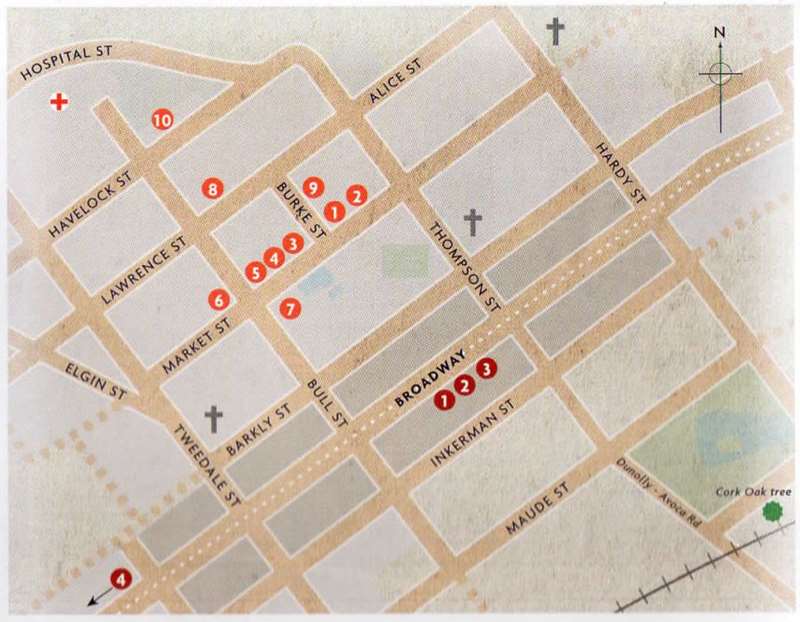
BROADWAY
1. Dunolly Court House 1884-90, Dunolly Town Hall 1890-1974
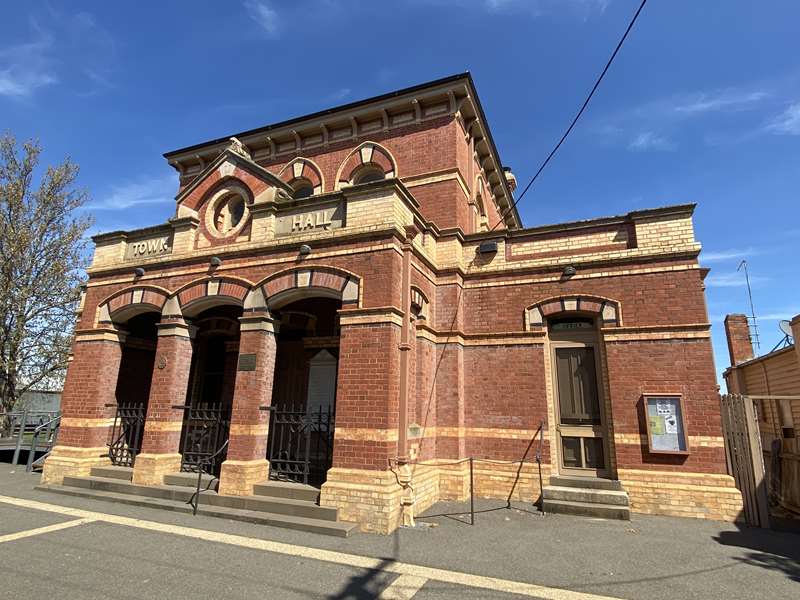
2. Goldfields Museum c1860
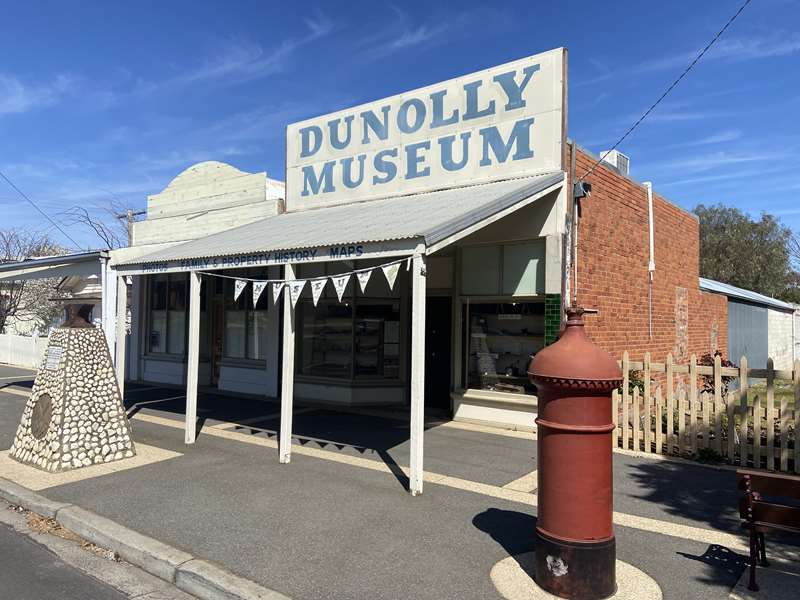
3. Rene Fox Gardens
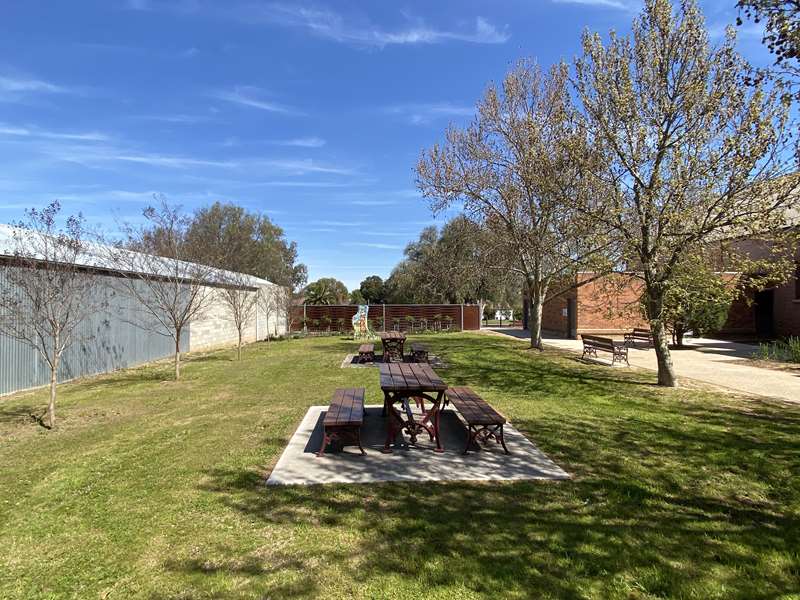
4. Footer's Mansion 1865, 188 Broadway
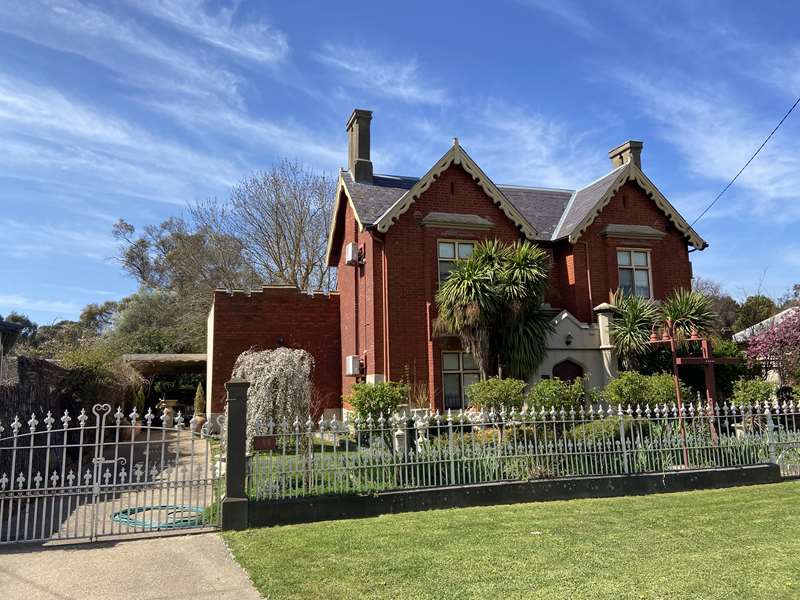
MARKET STREET
1. Land Titles Office (Postal and Telegraph Office 1872-91)
2. Post Office (Lands and Survey Office 1861)
In the 1860w, Postmaster Robert Cowley delivered milk to Dunolly Hospital and letters to local households.
Sometimes confusing milk with mail, Crowley dismayed locals by rarely sorting their letters. H.F. O'Connell took over the postal service in 1869.
Dunolly's second post office faced Market Square opposite Gordon Gardens, although letters might arrive at a string of unofficial sites, so that locals had to go from one private house after another to collect their mail. A sparkling new post office (1890-91) resolved the confusion. Architect Henry Bastow designed the post office with separate mail and money order sections on the ground floor. Bastow had studied alongside novelist Thomas Hardy in Dorchester, England, before designing schools, railway buildings and waterworks in Tasmania and Victoria.
Dunolly's post office contributes gracefully to Broadway; Bastow's design, drawing from gothic and renaissance forerunners, reminds us of gold-mining Dunolly: rich in style and progressive in its character.
3. Site of Police Court 1860-79, Shire of Bet Bet Hall 1879-1921, Power House 1929-38
4. Site of Police Station (Lock Up at rear, 1862)
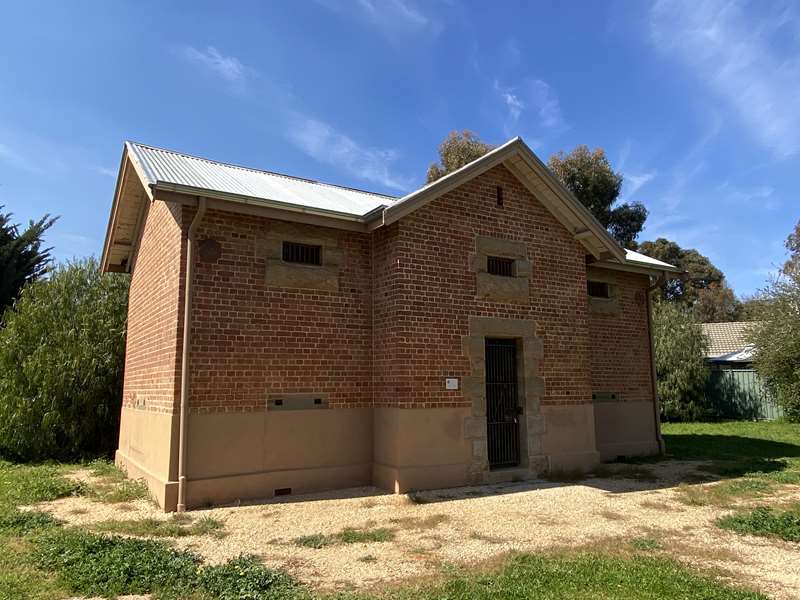
5. Borough of Dunolly Town Hall 1862-90, County and Magistrates Court 1890-1981
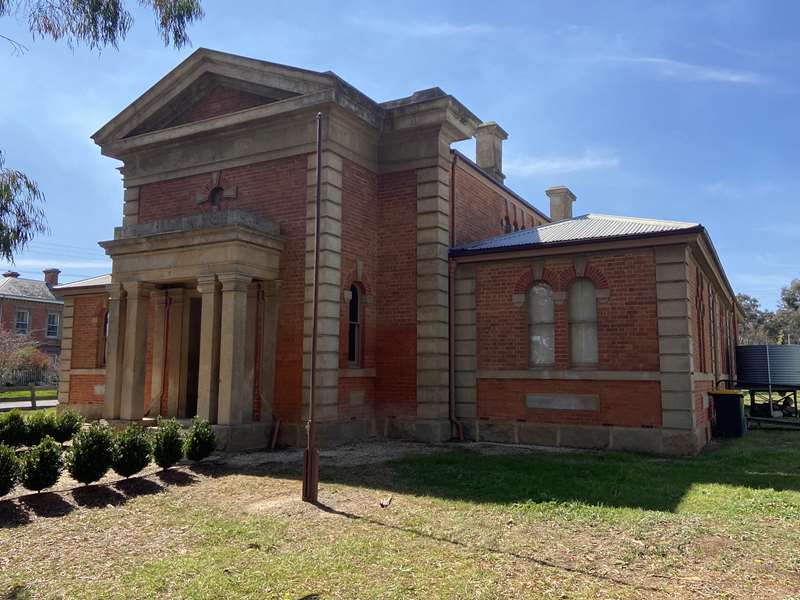
6. Belleville c1866, James Bell residence
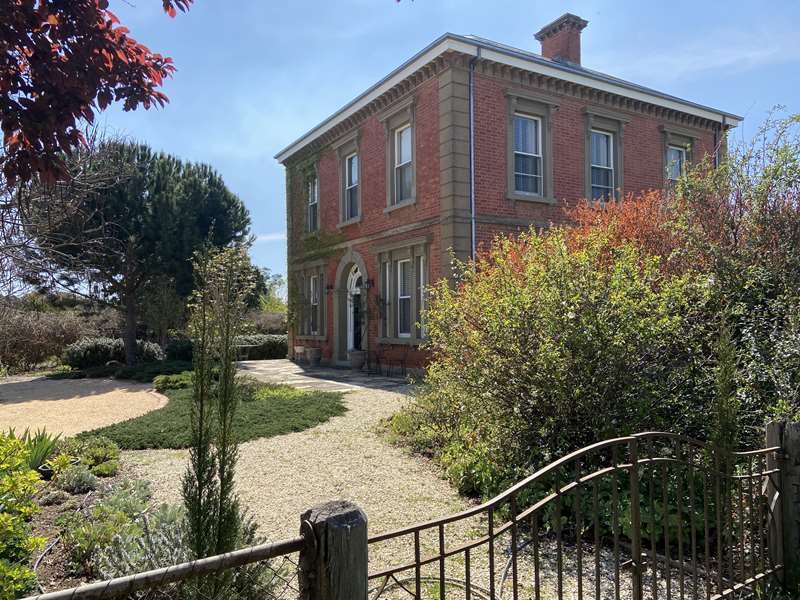
7. Gordon Gardens
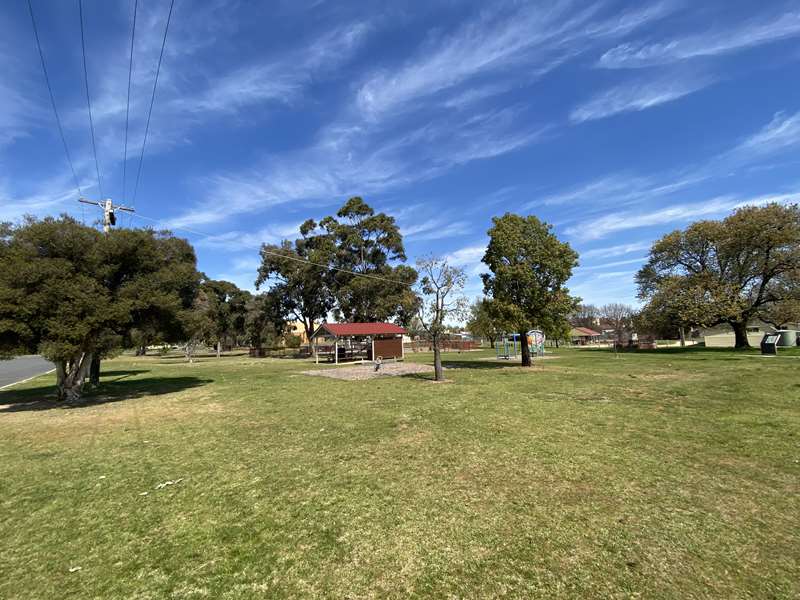
8. First Court House, County Court 1858
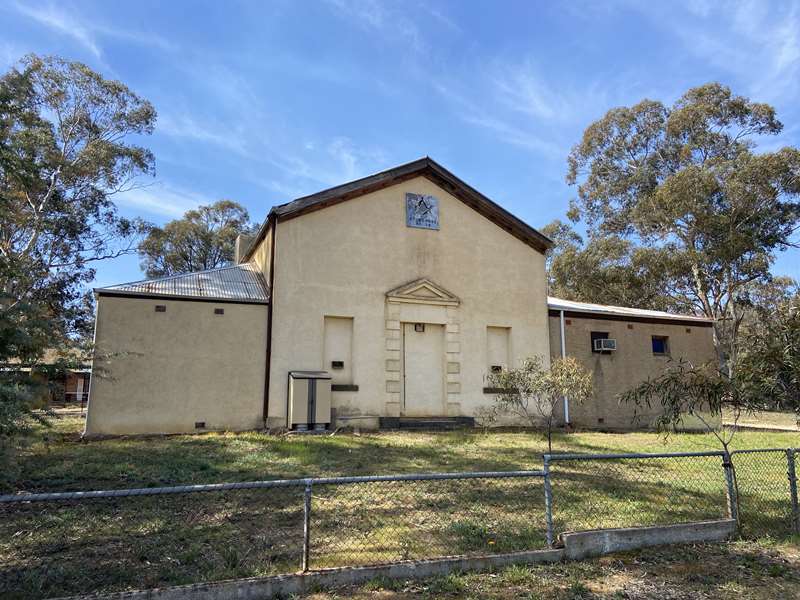
9. Gold Office 1861
10. Chauncy Cottage 1859, Chauncy was District Surveyor from 1861
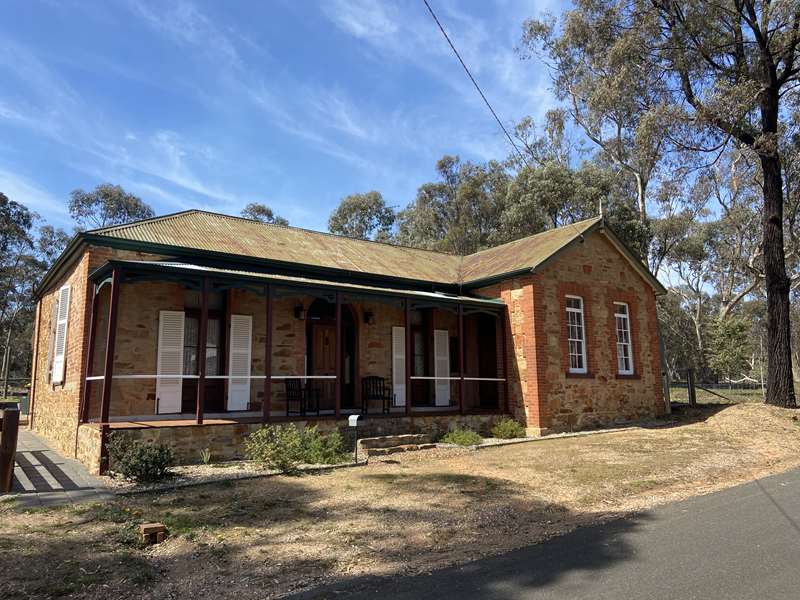
GOLDFIELDS MUSEUM
Within the Dunolly Museum there is an impressive collection of local nugget replicas. This museum also has photographs and displays covering Aborigines, Chinese miners, local women, firearms and the history of the town and surrounding area. One special artefact is the first metal detector to be used on the Australian Goldfields.
Allow at least 30 minutes to view this collection. The Museum is a great resource for searching family histories of the Dunolly District.
The cairn outside the museum commemorates the finding of the Welcome Stranger.
DUNOLLY TOWN HALL
Built as a County Court in 1884, this building swapped functions with the original Borough of Dunolly Town Hall in 1890.
Some say it was because the judges could not hear the proceedings. The rear hall was completed in 1892. The portraits and honour boards record many men active in local business and community life - no women to be seen until the 1990s! Historic theatre drops continue to be used for local performances in the hall.
DUNOLLY COURT HOUSE
Proclaimed as a Borough in 1858, the original Town Hall was built in 1863, complete with a public library and reading room, as well as the usual Council Chamber and offices.
In 1884 the centre of local government in Dunolly moved to the Court House on Broadway and the beautiful court furnitute and fittings were reconstructed in their present setting. The judge's robing room and separate entrance were added and the layout modified. The Court House continued to operate for a century.
POLICE STABLES, LOCK UP AND POLICE STATION
The stables and lock up were constructed in 1863 to complete the police and court buildings on the government and legal precinct on Market Street.
The Lock Up was used until the Dunolly Court closed in 1981 and the stables were converted to be a garage sometime before World War Two. Both buildings were restored in 2014.
The police station is typical of the buildings provided by the Police Department in remote and rural areas of Victoria in the 1950s.
Location
75 Broadway, Dunolly 3472 View Map








